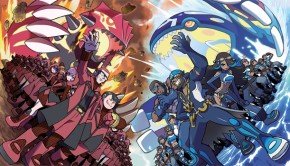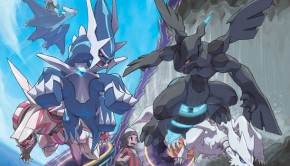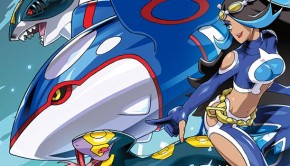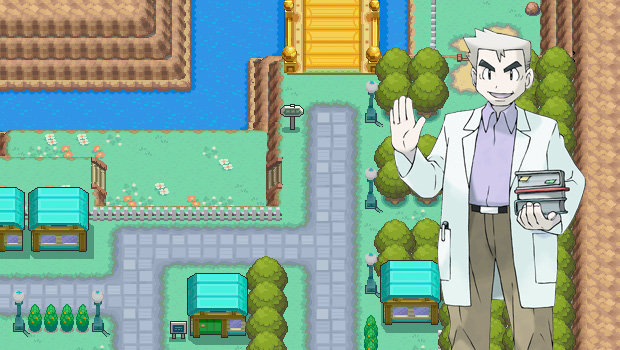The Little Things: How Battle Mechanics and Rule Variations Affect the Metagame
The first time I qualified for Nationals was in 2005 for the Battle in Seattle tournament. At the time, I was one of the youngest in the group at 15 while half the field was 20 or older. Now, at age 23, I’m one of the old guard riding a wave of prodigy high schoolers, grumbling about the good old days and telling kids to get off on my lawn (or Game Link Cable). Every player who’s competed in tournaments for more than a few years has their own idea of the “good old days” and their own favorite metagame thanks to the varied rulesets and dominant playstyles we’ve seen over the years. Each year of tournament play has seen some pretty obvious changes, like the addition of Ubers to the 2010 metagame or the restriction of all Pokémon not found in the Unova Pokédex in 2011. In this article, however, I intend to begin a discussion on two of the more overlooked contributing factors of the trending metagame: rule variants and battle mechanics, those changes between the metagames that seem insignificant at first glance but shape the metagame nonetheless.
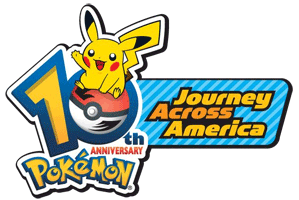
Journey Across America (2006)
Many players my age will tell you this was the best tournament that organized play has ever seen; all non-event Pokémon were allowed, and Team Preview, Sleep clause and Freeze clause were active, making this tournament one that would be missed. Oh, that’s not even mentioning the fact that, unlike any other year, more than half the states in the country had their own representation via a championship — all of which were on a different weekend from February to July, encouraging some players to road trip across the country and enter multiple tournaments. Because there was one tournament a week, it was easy to see changes in the metagame, slowly crafting the centralized metagame seen at Nationals. By Nationals, almost every team had a Mewtwo, Snorlax, Rayquaza or Kyogre, many of which used only those four.
Team Preview wouldn’t be seen again for another few years, but in JAA you could already see some of the strategies seen in the current metagame. Bluffing strategies like heavy Rain to provoke an advantageous lead matchup or predicting leads at all both forced competitors to have a lot of insight into the game. In other words, many players would stick to the same four, but have two alternate Pokémon that could mean trouble for their team’s obvious counters – for instance, Shedinja was remarkably useful with many players spamming Rain or Imprison/Explosion teams. Several players, myself included, ran Shedinja not intending to use it, but to intimidate other players and force them to bring a Shedinja counter and disrupt the synergy of their own core four. When Team Preview returned in 2011, this strategy was dusted off as some players decided to run Zoroark, whose Illusion ability would disguise Zoroark as another one of the player’s Pokémon, not intending to actually bring Zoroark, but to get inside their opponent’s head and make him wonder whether the Pokémon he was seeing wasn’t actually a Zoroark in disguise.
High risk, high reward moves were more common in JAA, most likely to keep up with the heavy hitting power of Ubers floating around; for example, Hydro Pump was more common than both Surf and Waterfall (note Scald did not exist in 3rd Generation and only Swampert received Muddy Water). With no limit to the number of Ubers that could enter a match, killing your opponent’s Pokémon as quickly as possible was always the preferred option. As a point of reference, the JAA battle timer was only eight minutes long, compared to this year’s fifteen, but more often than not the battles did not come down to time.
While these are mostly obvious changes that will be familiar to the current crop of battlers, one of the most often forgotten rule changes that altered the JAA metagame was a basic 3rd Gen mechanic. In Doubles, after a Pokémon fainted, a replacement Pokémon would be switched in immediately afterwards, in the middle of the turn. This meant that the new Pokémon could take damage before it even had a chance to select a move. The best example I can remember of this mechanic in action was the National Championship finals, Calvin Chan versus Minh Ba Lee. Minh lead with a Groudon and a Clefable while Calvin showed Snorlax. Since Explosion and Selfdestruct were popular that year, especially on Snorlax, Minh set up a Reflect on his Clefable right off the bat while his Groudon set up. The next turn, Calvin decided to take out Groudon before it became a problem, causing his Snorlax to Selfdestruct despite Minh’s Reflect. Not only did both Groudon and Clefable survive, but Minh predicted the Selfdestruct and responded with a Counter from Clefable. Calvin’s incoming Kyogre, fresh onto the field and replacing Snorlax, took Clefable’s Counter damage, causing what could have been a quick 3-2 for Calvin to become a 2-4 in favor of Minh.
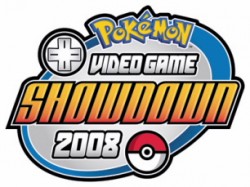
Showdown ‘08/VGC ’09
With no U.S. Nationals in 2007, and only two U.S. Worlds Qualifiers (read: no Regionals/Nats) for Showdown ’08, the next truly influential metagame was VGC ’09, despite both having the same rules. Most notably, these two years abolished the Sleep and Freeze clauses that were common in JAA, and with the introduction of Diamond and Pearl one threat rose to power: Smeargle. Darkrai’s contribution of Dark Void to Smeargle’s already impressive move pool meant it could potentially put both opponents to sleep at once, as seen in one of my battles at the Nashville Regional. The absence of Ubers or power boosting items like the Gems meant that Smeargle had just enough bulk to reasonably justify playing it competitively. As a result, Dark Void spam was a threat every team had to prepare for, with most veteran players packing Lum and Chesto Berries on their powerhouse Pokémon.
However, Dark Void was less common come the end of 2009 due to one change from JAA: the absence of Team Preview. A paralyzed or close-to-death Smeargle was a useless Smeargle, and 4th Gen’s expanded the availability of priority attacks, introducing Bullet Punch and widening Mach Punch’s distribution, which made Smeargle easier to deal with. Weather and Trick Room teams also saw a decline as the metagame carried on as players evolved to prepare for these tactics instinctively. Fear of the unknown led to the rise in “goodstuffs” teams, teams with no particular strategy other than to cover as many threats as possible. Garchomp and Zapdos saw a notable surge this year as their typings and movepools allowed them to cover many different threats without the need for setup. Not even Blizzard spamming Abomasnow, which hit for super effective damage against both, was a safe option; Garchomp had Rock Slide, and Platinum gave Zapdos access to Heat Wave.
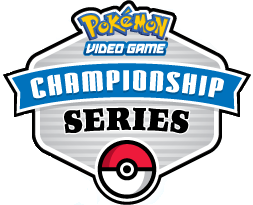
VGC ‘10
Ubers. Ubers everywhere.
Smeargle’s day in the sun faded entirely with the introduction of more powerful Pokémon; not only that, but by this point Dark Void was a threat for the third metagame in a row, so virtually everyone knew how to counter it at this point. The only Dark Voiders that survived were Choice Scarf users — and while Dark Void was still a threat, it was far more manageable.
With the reintroduction of the Ubers that had been banned for the past four years, Groudon and Kyogre both made a triumphant return. Groudon in particular received more playtime than its sparse 2006 performance thanks to new Pokémon like Cresselia that paired particularly well with Groudon. Rayquaza, the other major Uber threat from JAA, was not seen as much this year due to the sheer number of potential Ice Beam users as well as the introduction of new Dragon-type Ubers like Palkia and Dialga who could rip through the comparatively frail Rayquaza, though the National Champion that year Wesley Morioka put on a good show with his Kangaskhan/Rayquaza lead in the National Championship finals.
Taunt, a staple of modern play, was a precarious move in 2010 thanks to the addition of Ubers. Palkia and Dialga, for example, could set up TR or bypass setup and just hit hard with powerful attacks like Draco Meteor. Unless the other Pokémon on the team made it apparent, using Taunt on a possible Trick Room set up risked wasting a turn and taking serious damage because of it. Speed control and disrupting of the turn order played a much bigger role than in previous years; with heavy offense being the dominant playstyle, hurting the opponent before the opponent hurt you was of utmost importance. “TopOgre” was an infamous threat that dominated the early VGC 2010 metagame, using Hitmontop to Fake Out a major threat, allowing Choice Scarfed Kyogre to Water Spout or Muddy Water for a quick 4-2. The TopOgre combination also utilized Hitmontop’s strong priority attacks combined with the Technician ability to deal as much damage as possible before the opponent could even move. One trainer, Brianna Brit, even made it to Worlds with a bulky Quick Claw Kyogre (among other strategies), proving both how novel bulk was and how vital turn order was. Protect also rose in usage from the previous year, becoming ubiquitous as almost every Pokémon ran Protect for the chance to make the opponent waste a turn.
Perhaps one of my favorite sheer chaos rules that official tournaments haven’t seen since this year was the ability to change items — namely, players registered six items at the beginning of the tournament, and could swap them among various Pokémon in between rounds. Huy Ha (Huy), for example, was notorious that year for swapping his items around and confusing his opponents, notably moving around Life Orb to net crucial KOs on specific threats that opponents might bring. The Nationals top cut and Worlds Swiss and top cut were in a best two out of three format (a format I’ll discuss later), and switching between battles gave him a significant mind games advantage over his opponents. With most of Nationals and Regionals requiring someone to only fight the same person once, the top cut players like Huy had to deal with a depth of play that those of us who didn’t make it to the top could only imagine.
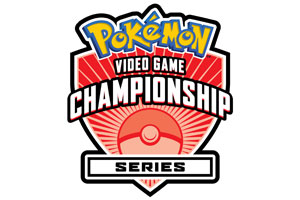
VGC ‘11
Taking a page out of Pokemon Festa’s notebook from ’03, ’06 and ‘07, the last year’s VGC format only allowed Pokémon from the Unova Pokédex. Limiting the game to fewer than 150 pokemon was something unseen since RBY days in the U.S., centralizing the game around what this limited pool of creatures could do.
The metagame started off hyper offensive as many of the top threats were understood to have “glass cannon” stats, but Trick Room began to see a rise due to the opportunity to bring bulky Pokémon to a glass cannon metagame, culmination in Wolfe Glick’s (Wolfey) first National Championship. Taunt began to see use again, largely thanks to the popularity of Tailwind which received buffs in the form of an extra turn of Tailwind’s Speed boost and the addition of the ability Prankster which gave +1 priority to Tailwind. Taunt was also one of the only sure-fire ways to shut down Amoonguss whose Spore and Rage Powder were the bane of many players. Because so many Pokémon could be OHKO’ed by at least one other overused Pokémon, speed control became incredibly important with most matches being decided by how many turns of Tailwind or Trick Room were left or whether or not you could Paralyze enough of your opponent’s threats with Thunder Wave, which was also boosted by Prankster. All of this combined to give Taunt much more use in 2011.
During Worlds, the seasoned veterans did whatever it took to compensate for their frail fighters, even hurting their own Pokémon in a spurt of creativity. One player — and I apologize for forgetting who it was — had one of the best plays I’d ever seen to stall a turn. From what I recall, Trick Room was up, and all that was left on the field was a Burned Scrafty in the red and Musharna on one side, with a weakened Hydreigon on the other. Hydreigon, knowing that it would attack last with Trick Room up, Protect-stalled the penultimate turn. Scrafty’s health was low enough to faint from Burn, leaving Musharna unprotected and without any real offense against the threatening Hydreigon. Scrafty, instead of simply waiting it out, Drain Punched his own partner Musharna, guaranteeing an extra turn of survival. And with Protect used the turn before, Hydreigon failed to Protect next turn, ensuring Scrafty’s victory. Other players would Paralyze their own Pokémon as a last ditch Trick Room counter or to protect against Amoonguss’ Spore, which was also impressive.
As for battle mechanics, VGC ’11 was the first official tournament using the 5th Generation carts, the most notable change being the halving of Explosion and Selfdestruct’s damage. Even with the frail metagame, most Exploders didn’t OHKO without a Normal Gem for support, ending what was a top-tier threat for all of JAA, VGC ’08 and ’09, and to a smaller extent VGC ’10. Imprison, a move often paired with Explosion or Selfdestruct, was still valued due to its ability to block Protect, though some players began to use it to block other moves like Trick Room.
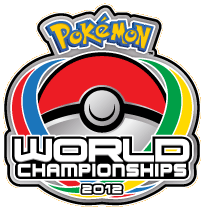
VGC ’12’s Last Chance Qualifier
Until recently, only a handful of players had ever experienced battles that were best two out of three in Nintendo-sanctioned tournaments — various years’ Nationals top cut and the World Championships were pretty much the only reason to prepare for such a thing. But for those of you about to enter the Last Chance Qualifier in Hawaii, that’s about to change. The LCQ will be single elimination, and for the first time it will be best two out of three for each match.
The key to victory in this format includes two variables less dominant in other formats: how quickly each player can memorize the opponent’s team, and how long each player can keep his or her own team’s surprises a secret. Veteran players like Danny Zollner (Dan) and Aaron Zheng (Cybertron) adapted to this format by learning the items and damage calculations as they go, sometimes even writing things down to keep track. In best-of-three, this makes predictions much more complex; suddenly, information like who outspeeds or OHKOs whom becomes readily available. And most players, with a little luck and practice, won’t make the same mistakes more than once.
The Team Magma has held weekly VGC practice tournaments in this format since the end of Nationals, and already I’m noticing other trends that don’t come up as often in other metagames. Knowing exactly what opposing Pokémon can do from first-hand experience creates a mental checklist; a player knows what has to die to guarantee one’s own survival. Let’s say you’re playing a match, and you know your opponent has Whimsicott and Terrakion in the back, with two other weakened Pokémon currently on the field. The dreaded “Terra-cott” combination, a threat made famous in VGC ’11 using Whimsicott’s Beat Up in conjunction with Terrakion’s Justified ability to give Terrakion a +4 boost to its attack, is obviously something you don’t want to risk allowing a chance to set up — especially if you just had your clock cleaned by it in the previous match, confirming without a doubt that Beat Up/Rock Slide can happen in this game. Normally, a double KO with a move like Heat Wave on the weakened front would be advantageous: it’s a quicker road to victory and would possibly lead to less damage taken that turn. In this case, however, killing the opponent’s Pokémon one at a time would stagger the entrance of Whimsicott and Terrakion onto the field, keeping them from immediately setting up and allowing you to deal some damage before they can even attempt a sweep. In the best case scenario, a super effective move and a priority move could kill Terrakion or Whimsicott before the Beat Up turn, paving the way to a smooth victory.
Conclusion
The LCQ is just around the corner, and if there’s one thing we know about what will happen, it’s this: we’ll learn first-hand that the available Pokémon, items and moves are not the only things that influence the metagame. A rule change mid-season makes smart players plan and construct teams differently, and no doubt we’ll see a few creative combinations that we may not even see in Worlds. Additionally, unlike the World Championships, the LCQ is open to everyone, meaning the opportunity to weed out certain skill levels or metagame trends is non-existent. Between all of these things, Nintendo seems to be guaranteeing that each battle will be unique and a thrill to watch. And when the game is different every time, no matter what the reason, it’s no wonder we keep coming back year after year.


